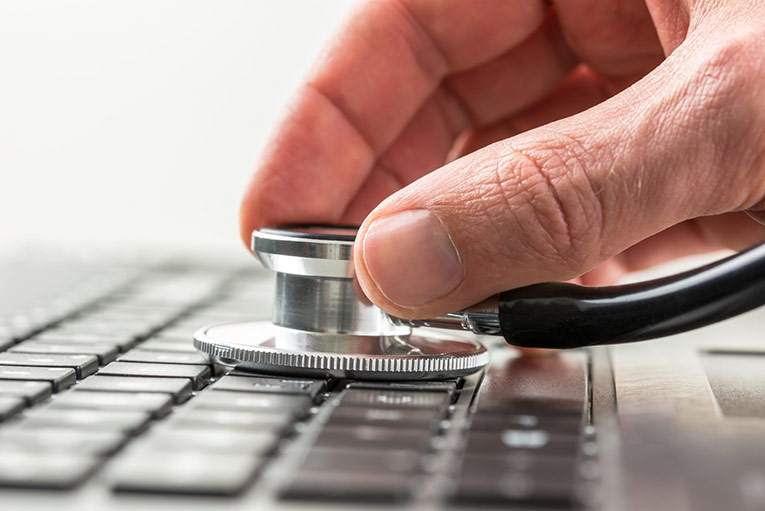
People generally don’t think of the behavioral sciences as disciplines that make great use of technology. This perception may originate from historical observations that mental health practitioners are often late technology adopters or bypass innovations entirely. However, new technologies can deliver considerable benefits for these disciplines just as they have in other fields.
A Solution for an Underserved Population
Developed nations employ nearly one psychiatrist for every 11,640 citizens. [2] Despite the region, behavioral health is a commonly overlooked and under budgeted discipline. Case in point, only one in ten patients who suffer from mental health conditions receive treatment.
Recently, global behavioral health advocates have lobbied to remedy this issue. As a result, public opinion about mental health is shifting toward understanding and legislators are taking actions that will soon promote positive behavioral health outcomes. In the meantime, advanced psychiatric mental health nurse practitioners (APMHNPs) can use developing technologies to fill the behavioral health treatment void. For example, cell phones allow practitioners to deliver treatments to remote, inaccessible, and financially burdened regions.
In the near future, the following four innovations will grow in popularity as treatment resources for advanced psychiatric mental health practitioners.
Mobile Sensors
Repurposed mobile technology, from smartphones to so-called “dumbphones,” is a cost-effective innovation increasingly deployed by advanced psychiatric mental health nurse practitioners. [3] Oxford University researchers and other scientists have found that short message service (also called SMS or text messages) and voice mail are the two simplest and cost-effective tools that nurse practitioners can use for manual monitoring and delivering talk therapy to patients.
Smartphones add a new level of innovation to treatment by allowing APMHNPs to utilize advanced technologies. These may include user-friendly mobile applications, multimedia presentations, and high-tech movement sensors, such as accelerometers and global positioning systems (GPS) that generate detail-rich patient information and allow care providers to develop more intelligent interventions. The Mobilyze! System, for example, incorporates 38 smartphone sensors and information entered by patients to build psychological profiles and generate customized treatment plans for unipolar depression. This technology has the potential to greatly improve APMHNPs’ ability to detect the condition, especially in underserved areas.
Personal Health Records
Personal health records (PHRs) improve APMHNPs’ ability to manage patients by accessing patient medical information such as immunizations, lab results, and appointments. [4] Additionally, APMHNPs can share this information with patients, allowing them to better participate in their own recoveries. This transparency improves patient engagement and encourages them to participate in their own wellness outside of the treatment setting.
PHRs also make it easier for patients to share information with medical professionals, which facilitates collaboration and information consistency among multiple care providers. When emergencies occur, online personal health records provide fast access to critical information from any compatible internet-connected device. APMHNPs also use online PHR systems to allow patients to request prescription refills and arrange appointments.
Brain Imaging Technology
In some cases, APMHNPs must repair the psychological and emotional damage caused by traumatizing events. [5] Patients who demand such therapies may come from backgrounds with early developmental barriers such as abuse, neglect, or unhealthy relationships with close family members.
Brain imaging technologies, such as the quantitative electroencephalogram (QEEG) and functional magnetic resonance imagery (fMRI), aid APMHNPs in monitoring mental processes beyond patients’ verbal responses. The technologies align with the word association test developed by noted cognitive researcher Carl Jung over 100 years ago and aid mental health nurse practitioners in making advanced diagnoses regarding patient behavioral health.
Health Information Technology
Health information technology (HIT) aids APMHNPs in managing, storing, securing, and sharing patient behavioral records with patients, authorized family members, and care providers. [6] HIT helps behavioral health nurse practitioners enhance care quality and efficiency by eliminating unnecessary tests, improving treatment plan accuracy, and reducing care costs.
Some benefits and savings come in the form of reduced hardcopy management and fast access to records, which allow nurse practitioners to spend more time healing patients. HIT also improves PHR accuracy and completeness. Moreover, patients can easily manage information sharing when freed from the burdens related to managing hardcopy patient records.
Many United States health care organizations are testing behavioral health technology integration on a small scale. However, armed with the latest best practices in behavioral sciences, APMHNPs can use technology to serve the population’s behavior health care demands. While the behavioral health discipline works on incorporating innovations, APMHNPs can independently implement new technologies that improve therapy outcomes now.
Learn More
Health care is seeing an industry-wide demand for advanced practice nurses trained at the doctoral level due to the changing landscape, drive for improved patient outcomes, and a shortage of qualified nurses. If you’re an RN with a bachelor’s degree in nursing and ready to take your career to a higher level, the Regis College’s BSN to Doctor of Nursing Practice online program can prepare you for advanced nursing practice.
Sources:
[2] The Guardian – How technology could help monitor and treat mental health conditions
[3] HealthIT.gov
[4] US National Library of Medicine National Institutes of Health
